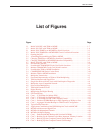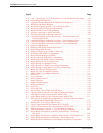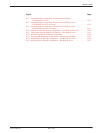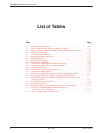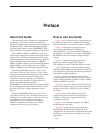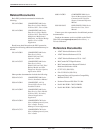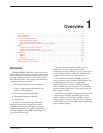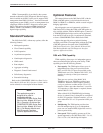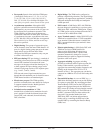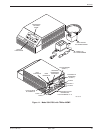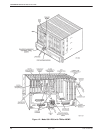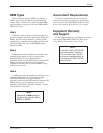
Overview
1-33610-A2-GB41-60 March 1999
• Port speeds. Speeds of the individual TDM ports
(1 through 6) can be set to 1.2, 2, 2.4, 4, 4.4, 4.8,
7.2, 8.4, 9.2, 9.6, 12, 14.4, 16.8, 18, 18.8, 19.2,
28.8, 32, 38.4, 48, 56, or 64 kbps full-duplex. The
sum of the port speeds cannot exceed the line speed.
• Asynchronous operation. Although the DSU
provides synchronous transmission through the
DDS network, any one or more of the six ports can
be configured for asynchronous operation. The
TDM capability provides the asynchronous-to-
synchronous conversion on these ports. In addition
to synchronous data rates, asynchronous data rates
of 150, 300, 600, 1200, and 1800 bps are supported.
The word size is 6 to 10 bits, and one or two stop
bits can be specified.
• Digital sharing. Two groups of consecutive ports
can be formed to share the same TDM channel. All
ports in a digital-sharing group operate at the same
speed and all receive the same data. When
configured for DSD port contention, only one port
at a time is allowed to send.
• FEP port sharing. FEP port sharing is a method of
connecting a front-end processor (FEP) to multiple
control DSUs/modems to broadcast the same
message over the network and the shared port. Up
to three separate FEP port-sharing groups can be
selected. Each group consists of two adjacent ports
(e.g., 1 and 2, 3 and 4, 5 and 6).
FEP data and control signal transmissions pass
through the odd-numbered port for broadcast onto a
TDM channel and the even-numbered port.
• Elastic store per port. The TDM capability
provides a transmit elastic store buffer for each port
to support extended circuits. Both digital and
analog extensions are supported.
• Switched-carrier emulation. In TDM
transmission, switched-carrier emulation for each
port is optional for both the inbound (toward the
control DSU) and outbound (from the tributary
DSU) directions.
• Digital bridge. The TDM can be configured to
perform a digital bridge function. The digital bridge
capability can support many applications, including
dedicated multipoint dial backup and multipoint
LADS operation.
• NMS control. A 3600 Series DSU with TDM has
the same diagnostic capabilities as a point-to-point
3600 Series DSU without the TDM option. Control
of a TDM session can be performed from the DCP
or from a 6700 or 6800 Series NMS.
• Async Terminal control. A Model 3610 DSU with
TDM can be controlled from a VT100-compatible
async terminal. When this feature is enabled, the
DSU is operated from the async terminal’s menu
and keyboard.
• Point-to-point backup. A 3600 Series DSU with
TDM can also have a DBM installed for
point-to-point dial backup. If backup is at a
different speed than the DSU’s speed, TDM
operation automatically changes to a second
predetermined port speed to support dial backup
operation at the lower speed.
• Aggregate switching. Aggregate switching
provides an additional mode of point-to-point dial
backup. When enabled, it provides an internal
aggregate data stream that includes diagnostics and
framing on the alternate EIA-232-D or V.35
interface of Port 1. The aggregate port can then be
connected to a DBM or an external dial backup unit
(DBU).
• External dial backup. An external DBU (e.g., a
3800 Series dial/lease modem) can provide backup
for a point-to-point DSU. By monitoring the Data
Terminal Ready (DTR) lead on the DTE port that
supports the aggregate data path, the 3600 Series
DSU can set up a backup session when the external
DBU receives an incoming call. The DTR lead of
the DSU’s alternate DTE port then switches the
data path. Using another method, the local
3600 Series DSU can initiate and terminate a
backup call by controlling the DTR lead of the
external DBU by controlling the Data Set Ready
(DSR) lead.



